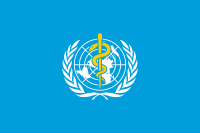
Photo from wikipedia
Hot-Spotters Aren’t “The Problem”...But They Are Emblematic of the Failure of U.S. Healthcare Hemal K. Kanzaria, MD MSc 1,2 and Jerome R. Hoffman, MA MD 3 Department of Emergency Medicine,… Click to show full abstract
Hot-Spotters Aren’t “The Problem”...But They Are Emblematic of the Failure of U.S. Healthcare Hemal K. Kanzaria, MD MSc 1,2 and Jerome R. Hoffman, MA MD 3 Department of Emergency Medicine, University of California, San Francisco, San Francisco, CA, USA; 2 San Francisco Health Network, San Francisco, CA, USA; 3 University of California Los Angeles, Los Angeles, CA, USA. J Gen Intern Med DOI: 10.1007/s11606-016-3846-4 © Society of General Internal Medicine 2016 a disproportionate share of costs, and that a majority of ex- penditures nevertheless come from other sources. They also identify various types of high-cost patients, and articulate that no single intervention will address their varied needs. If we want to impact overall healthcare spending substantially, therefore, we must, as the authors stress, look beyond the small group of hot-spotters. his very influential article in the New Yorker, Atul I n Gawande shined a bright light on the small group of neediest patients who access the healthcare system extremely frequently. 1 These “frequent users” comprised only 1 % of the population in Camden, New Jersey, but accounted for about a third of all medical costs. Even so, their health outcomes were notoriously poor, implying that the system could do a far better job of taking care of them. One of the ways to help accomplish this, Gawande suggested, was through care management and coordination, something that is, unfortunately, generally inad- equate in American medicine, and likely even less available for this most vulnerable group of patients. In this issue of JGIM, Lee and colleagues explore healthcare utilization patterns among high-cost Medicare beneficiaries in the Cleveland Clinic Health System (CCHS). 2 Using an un- usual methodology, their study produced results that are quan- titatively different from, but qualitatively essentially the same as, those presented by Gawande. Frequent users comprise only about the same 1 % of the CCHS patient population, and account for an outsized proportion (in this case 15 %) of costs. Lee et al. also found that this group had markedly poor clinical outcomes, with substantially increased need for acute care services and (despite this) far greater than average mortality, even compared to others among the study’s high-cost popula- tion. Unlike Gawande, these authors choose not to highlight these striking problems among this small group of patients, but stress instead the fact that these frequent users—which Lee et al. call “hot-spotters”—account for only a minority of all healthcare costs. Because of this, they point out that even if it were possible to lower costs dramatically within this sub- group, our hugely bloated healthcare budget would not be greatly affected overall. Although we believe that certain aspects of the methodolo- gy used in this study—and thus the precision of its conclusions—can be challenged, we have no doubt that the results are largely correct. Lee and colleagues confirm both that frequent healthcare users do very poorly despite incurring IS ANY OF THIS A SURPRISE? Who could doubt that no single intervention is likely to address the needs of all these high-cost patients? Indeed, we could argue that there are still other patients who do not fit neatly into Lee et al.’s five-cluster high-cost patient classifica- tion. For example, patients who suffer acute trauma, patients who require emergency inpatient dialysis, patients with mul- tiple chronic conditions, and patients with serious mental illness (SMI) or terminal cancer have all been identified else- where as high-cost frequent users. 3 But regardless of how high-cost patients are categorized, a multifaceted approach is surely required, as Lee et al. suggest, involving distinct inter- ventions (e.g., violence prevention for trauma patients; coor- dinated medical, mental, and social services for patients with SMI; palliative care for terminal cancer patients) to address distinct health needs and their associated costs. 3,4 Lee et al. thus appropriately ask us to consider “a more comprehensive approach that addresses” other high-cost cate- gories identified in their study. Clients receiving ambulatory cancer treatment, surgical joint replacement patients, and users of critical care, for example, are each clearly big-ticket users. But worthwhile as it may be to identify such high-cost centers, we believe that any effort to address unsustainable healthcare spending also—and perhaps first and foremost—has to tackle, in a systematic way, the issue of waste. 5 There are a number of hugely inefficient and unethical costs in our current healthcare system. One-third of care provided in the U.S. is deemed to be excessive, resulting in over $700 billion annually on care without health benefit to patients. 5 Unnecessary testing and overtreatment persist, driven at least to some degree by conflict of interest and perverse incentives, despite their resultant harm to patients. Outrageous adminis- trative complexities, pricing failures, and business models that prioritize doing more and more result in unjustifiable waste. 5
Journal Title: Journal of General Internal Medicine
Year Published: 2017
Link to full text (if available)
Share on Social Media: Sign Up to like & get
recommendations!